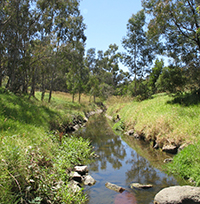Final ‘Waters of the US’ Rule Not Likely to End Controversy over Definitions, Applications
June 4, 2015
 The U.S. Environmental Protection Agency’s final Waters of the U.S. (WOTUS) rule, unveiled May 27, is not likely to dampen the controversy over the regulation, with NMPF and a number of farm and business groups continuing to express concerns over the rule.
The U.S. Environmental Protection Agency’s final Waters of the U.S. (WOTUS) rule, unveiled May 27, is not likely to dampen the controversy over the regulation, with NMPF and a number of farm and business groups continuing to express concerns over the rule.
Based on an initial review, NMPF said the regulation doesn’t adequately address concerns the Federation raised about vague definitions and unclear application of the initial proposal. “Above all, agriculture needs certainty on which waterways fall under the jurisdiction of the CWA,” said NMPF President and CEO Jim Mulhern. “EPA’s final rule doesn’t appear to provide that clarity.”
The House has already passed a bill requiring the Environmental Protection Agency and the Army Corps of Engineers to withdraw the rule, and similar legislation is pending in the Senate. Legislators can also attempt to block implementation of the rule through the appropriations process. At the same time, legal challenges to the EPA’s approach are also likely, as attorneys general in at least two states – Oklahoma and Arkansas – are considering seeking injunctions against enforcement of the rule.
The goal of the regulation is to better protect streams and wetlands from pollution. But from the start it was criticized, especially by farm groups, for its vague terminology, and for appearing to vastly increase the waterways subject to regulation under the federal Clean Water Act. The final, 297-page regulation attempts to more clearly define which streams and wetlands are considered tributaries of a navigable waterway, and therefore subject to CWA regulation. But in some instances, it says, case-by-case determinations will be necessary.
NMPF has followed Clean Water Act jurisdiction issues closely for many years. In July, it asked the EPA to withdraw written guidance for when farmers must seek CWA permits for a long list of normal farming activities near wetlands. A bipartisan group of House members backed up NMPF’s concerns and the guidance was eventually withdrawn.






